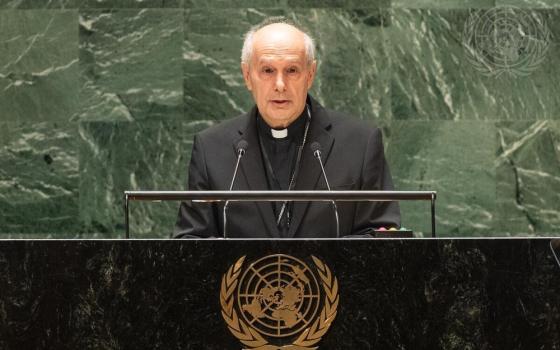Just a few days before the feast of St. John Bosco, founder of the Salesians, the Vatican Library announced a major project to inventory, digitalize, catalogue and study unique historical documents collected by a Salesian missionary to Japan.
The estimated 10,000 original documents, dating from early in the 1600s to the mid-1800s, provide cold bureaucratic details about the persecution of Christians in Japan during that period.
Salesian Fr. Mario Marega, who first arrived in Japan in 1930, gathered the documents, along with a smaller, but more varied collection preserved at the Pontifical Salesian University in Rome. He died in Italy in 1978.
The Vatican Library has begun a six-year project to organize and safeguard the material, working with the National Institute of Japanese Literature, the National Museum of Japanese History, the Historiographical Institute of the University of Tokyo and the historical archives of the Oita prefecture on Japan's Kyushu Island.
The collection held at the Vatican is made up mostly of local government records -- from what was the Bungo province in eastern Kyushu -- documenting the monitoring and persecution of Christians, according to an article in the Vatican newspaper written by Msgr. Cesare Pasini, prefect of the Vatican Library.
"Because the simple prohibition of professing the Christian faith did not have the hoped-for effect of stemming the missionary fervor and zeal of the Christian population, the shogunate administration decreed the obligation of apostasy," or the public renunciation of the faith, Pasini wrote.
The resistance of the local Christians and the Tokugawa shoguns' awareness that Christianity was not dying out can be seen in the fact that the apostasy order was issued in 1614 and again in 1635 and 1646.
Residents of Christian villages were required to register as members of their local Buddhist temple, signing documents renouncing Christianity. The registry and the apostasy declarations were forwarded to the local government archive.
The Bungo civic archive also received official reports about the annual "fumi-e" ritual, in which local residents were forced to step on a crucifix or images of Jesus or Mary to prove that they were not Christians.
Marega's collection of documents from the Bungo archive "reminds us of the Christian martyrs, along with those who could not withstand the trials, and constitutes extraordinary documentation for the study of Christianity in Japan," Pasini said. "In fact, experts on the subject know of no other collections of this size and breadth."
Which leaves the question: Why didn't anyone do something with the documents before? After all, groups of Japanese martyrs were beatified and canonized as recently as 2008, demonstrating the interest of the universal church.
Cardinal Raffaele Farina, retired prefect of the Vatican Library and himself a Salesian, said the documents at the Vatican were discovered "when the library was closed for restructuring from 2007 to 2010."
"We began studying what kind of documents there were and how many -- at first we did not realize how much was there," Farina told Catholic News Service Thursday, the eve of the feast of St. John Bosco.
Farina already was familiar with Marega's life as a selective and astute historical hoarder.
As archivist of the Salesian order for a decade before moving to the Vatican, the cardinal said, "I did what I could" to gather papers from Marega that were stored at the former Salesian generalate in Turin, Italy, and at the Salesian University in Rome. The gathering and study of the Salesian collection took a leap forward as the order prepared for the celebration in 2012 of the 75th anniversary of the establishment of its Japanese province.
Farina credits Delio Proverbio, an orientalist at the Vatican Library, and retired Bishop Francis Xavier Mizobe of Takamatsu, Japan -- another Salesian -- for discovering just how extraordinary the documents at the Vatican were.
The Vatican Library houses some 80,000 manuscripts, nearly 1.6 million books and approximately 8,400 incunabula (books and pamphlets printed before 1501).
The Marega collection, written in a style of Japanese hundreds of years old, wasn't exactly a popular focus of scholars visiting the library, the cardinal said.
So what led to the discovery of the importance of the Marega documents?
"It was just their turn," the cardinal said.



